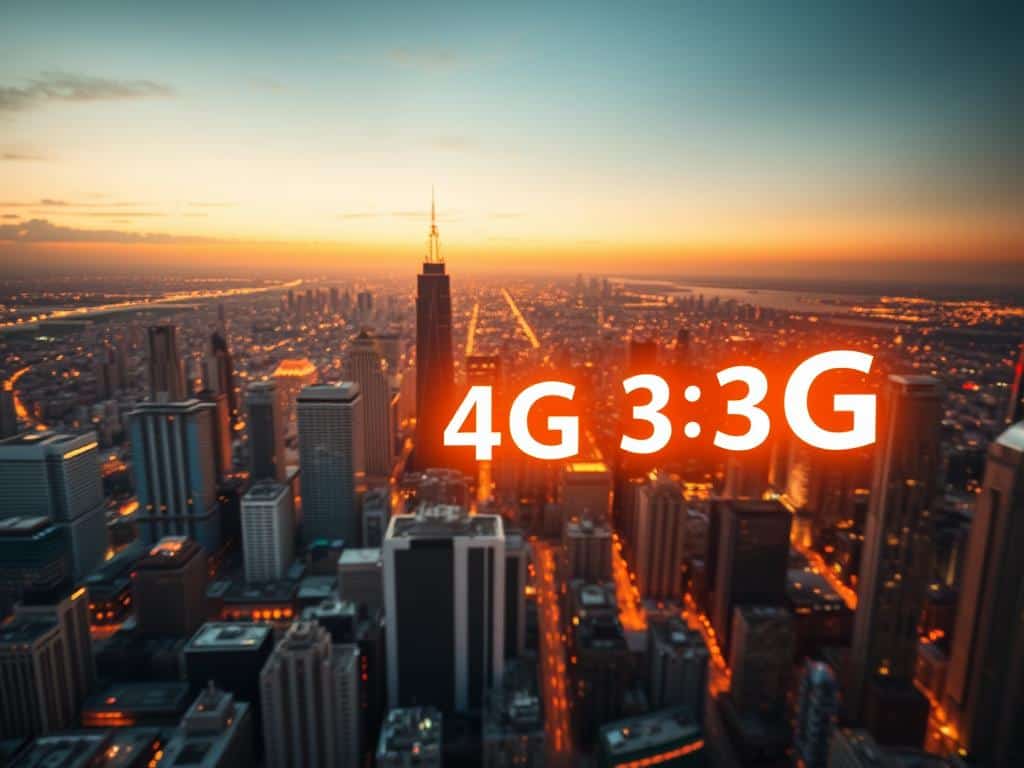Did you know 5G technology can download at speeds of up to 10 gigabits per second? That’s 100 times faster than 4G. With such fast speeds and low latency, many are excited. But, is 5G really as amazing as everyone says?
This article will explore 5G’s innovations and if its benefits are worth the challenges. We’ll look at how 5G works and compare it to 4G. I want to find out if 5G is the game-changer in tech that experts think it is.
As we enter this new era of mobile connectivity, it’s important to examine 5G’s promises and limitations. Let’s dive into this significant shift in mobile networks. We’ll see how it affects both consumers and businesses.
Key Takeaways
- 5G technology offers download speeds up to 10 Gbps, vastly exceeding 4G capabilities.
- The latency in 5G can be as low as one millisecond, improving real-time applications.
- Improved connectivity through smaller cells increases 5G network reliability.
- Network slicing allows various applications on a single 5G infrastructure.
- Transitioning to 5G may present challenges, including high upgrade costs and limited coverage.
Understanding 5G Technology and Its Innovations
5G technology is a big step forward in wireless communications. It brings new features that make our experience better. With faster speeds and better connectivity, 5G meets the growing need for quick data.
What is 5G Technology?
5G is the fifth generation of mobile networks. It aims to offer much faster data rates. It uses different frequencies to connect more devices, making the Internet of Things (IoT) possible.
Speed and Connectivity: What Can We Expect?
With 5G, we can expect faster speeds and better connectivity. Download speeds could hit up to 20 Gbps, much faster than 4G. The performance varies based on the frequency used.
Low-band frequencies offer speeds of 100-200 Mbps. Mid-band frequencies can reach 300-400 Mbps. High-band frequencies might even hit gigabit speeds. This means better performance for all devices.
The FCC is working to make 5G deployment easier and cheaper. This will help bring these benefits to more people. 5G’s low latency makes real-time applications better, changing how we use technology.
Comparing 5G with Previous Generations
When we look at 5G and 4G, two important things stand out: speed and latency. These are key to how well mobile networks work.
Speed Boost: Is 5G Really Faster Than 4G?
The 5G speed is amazing, with speeds up to 10 gigabits per second (Gbps). This is much faster than 4G’s 50 to 100 megabits per second (Mbps). In a 4G comparison, 5G is over 100 times quicker than 4G LTE. This makes it great for streaming and gaming.
Latency Issues: Addressing the Delay
Latency has also seen a big improvement. 4G has latencies of 20 to 30 milliseconds. But 5G aims for just 1 millisecond. This is key for things like remote surgery and self-driving cars. It makes everything feel more immediate and helps new services work better.

Conclusion
Looking at 5G technology, it’s clear it offers faster speeds, less delay, and better connection. This means downloading big files quickly and enjoying things like virtual reality in real-time. But, my own experience shows that how well it works depends on where you are and what devices you use.
As 5G grows, it will change how we live and work, even in rural areas. It could make healthcare better by allowing doctors to talk in real-time. It could also make streaming videos and shows better for everyone. But, we must also think about the challenges and new chances that come with this technology.
In the end, 5G is a big step forward for mobile connections. But, its full promise depends on more work and building up the network. For everyone, keeping up with these changes will help us use 5G to its fullest and stay ahead in the digital world.
